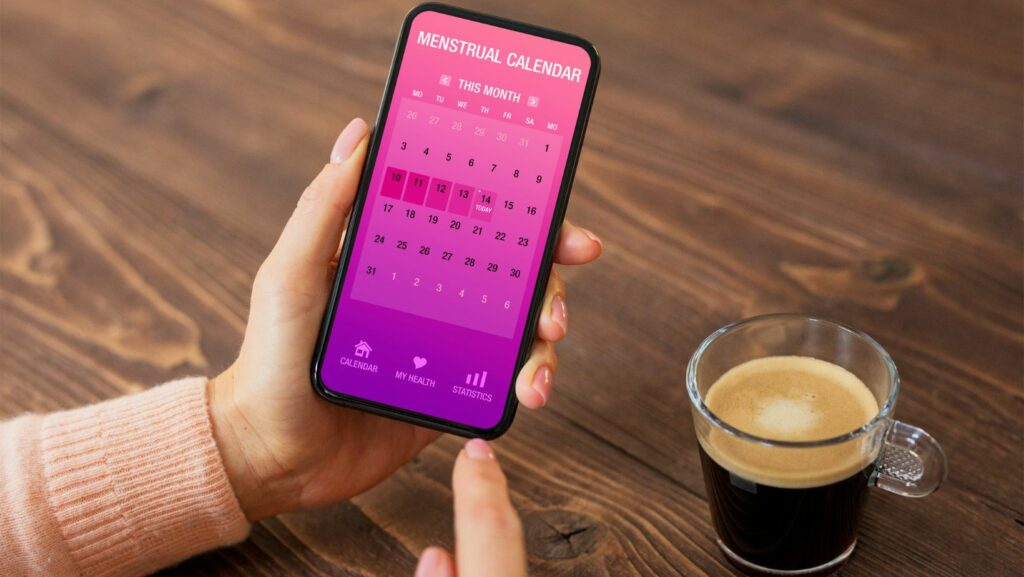Understanding one’s menstrual cycle can be a game-changer for managing health and planning daily activities. A menstrual cycle length calculator offers a simple yet powerful tool to track and predict periods, ovulation, and fertile windows. This can be particularly beneficial for those trying to conceive or simply wanting to gain better control over their reproductive health. These calculators use basic information like the start date of the last period and the average cycle length to provide personalized insights. By leveraging this data, individuals can anticipate upcoming cycles, making it easier to plan around potential symptoms and mood changes. With the convenience of technology, staying informed about one’s menstrual health has never been easier. Accurate cycle tracking is crucial for reproductive planning. Predicting ovulation windows aids those who’re trying to conceive or avoid pregnancy.
Menstrual Cycle Length Calculator
 A menstrual cycle length calculator is a digital tool designed to help individuals track and predict their menstrual cycles. By entering the first day of their last period and the average length of their cycle, users can obtain personalized information on their next period and ovulation dates. Tracking the menstrual cycle offers several advantages for health and planning. Understanding one’s cycle assists in managing symptoms, planning daily activities, and maintaining overall health. Monitoring the menstrual cycle provides several health benefits. Detecting irregular patterns early can signal potential health issues such as Polycystic Ovary Syndrome (PCOS) or thyroid disorders. Consistent tracking helps in understanding the body’s responses to lifestyle changes like diet or exercise. For example, noticing how certain foods impact menstrual symptoms enables individuals to make dietary adjustments for better management. Additionally, cycle tracking can help identify the onset of PMS (Premenstrual Syndrome) and manage it proactively.
A menstrual cycle length calculator is a digital tool designed to help individuals track and predict their menstrual cycles. By entering the first day of their last period and the average length of their cycle, users can obtain personalized information on their next period and ovulation dates. Tracking the menstrual cycle offers several advantages for health and planning. Understanding one’s cycle assists in managing symptoms, planning daily activities, and maintaining overall health. Monitoring the menstrual cycle provides several health benefits. Detecting irregular patterns early can signal potential health issues such as Polycystic Ovary Syndrome (PCOS) or thyroid disorders. Consistent tracking helps in understanding the body’s responses to lifestyle changes like diet or exercise. For example, noticing how certain foods impact menstrual symptoms enables individuals to make dietary adjustments for better management. Additionally, cycle tracking can help identify the onset of PMS (Premenstrual Syndrome) and manage it proactively.
Features Of A Menstrual Cycle Length Calculator
A menstrual cycle length calculator offers valuable tools for tracking and managing menstrual health. It provides several features to ensure a comprehensive and user-friendly experience. Users enter basic information to start tracking their cycles. Most calculators require the last period’s start date and the average cycle length. Some tools also allow detailed inputs such as period length and flow intensity. Accurate data input ensures precise cycle predictions and personalized insights. Effective calculators use algorithms based on user data to ensure accurate predictions. Cycle length variations are accounted for, improving reliability. Users receive better ovulation predictions with consistent data logging. Health organizations and medical references often back these algorithms for added credibility. A good user interface (UI) makes navigation simple and intuitive. Menstrual cycle calculators often feature clean layouts with easy-to-find functions. Users can log symptoms, view cycle history, and access insights with minimal effort. Many calculators now feature QR integration, allowing users to quickly access or share their cycle data with healthcare providers using a simple scan. Many apps offer customization options, such as setting reminders for period start dates or ovulation windows. The overall experience aims to be both helpful and engaging to encourage regular use. Knowing fertile days improves the chances of conception when desired, while for others, it can inform decisions on contraceptive use. Menstrual cycle data can be shared with healthcare providers to offer insights into fertility health, helping in diagnosing issues such as irregular ovulation or fertility problems.
ensure a comprehensive and user-friendly experience. Users enter basic information to start tracking their cycles. Most calculators require the last period’s start date and the average cycle length. Some tools also allow detailed inputs such as period length and flow intensity. Accurate data input ensures precise cycle predictions and personalized insights. Effective calculators use algorithms based on user data to ensure accurate predictions. Cycle length variations are accounted for, improving reliability. Users receive better ovulation predictions with consistent data logging. Health organizations and medical references often back these algorithms for added credibility. A good user interface (UI) makes navigation simple and intuitive. Menstrual cycle calculators often feature clean layouts with easy-to-find functions. Users can log symptoms, view cycle history, and access insights with minimal effort. Many calculators now feature QR integration, allowing users to quickly access or share their cycle data with healthcare providers using a simple scan. Many apps offer customization options, such as setting reminders for period start dates or ovulation windows. The overall experience aims to be both helpful and engaging to encourage regular use. Knowing fertile days improves the chances of conception when desired, while for others, it can inform decisions on contraceptive use. Menstrual cycle data can be shared with healthcare providers to offer insights into fertility health, helping in diagnosing issues such as irregular ovulation or fertility problems.
How To Use A Menstrual Cycle Length Calculator
 Using a menstrual cycle length calculator is straightforward. Begin by entering the start date of your last period and your average cycle length. These inputs allow the calculator to generate personalized predictions for your next period, ovulation, and fertile windows. Regularly updating this information ensures accurate and reliable insights. Most calculators also offer features like symptom logging and cycle history tracking. Utilize these to monitor any changes or patterns in your cycle. This data can be invaluable for managing symptoms and planning daily activities. For those trying to conceive, the calculator’s ovulation predictions are particularly useful. Additionally, sharing your logged data with healthcare providers can aid in diagnosing and treating any reproductive health issues. With numerous apps available, such as Clue, Flo, and Ovia, finding a user-friendly option that suits your needs is easier than ever. Embrace this technology to enhance your menstrual health management and overall well-being.
Using a menstrual cycle length calculator is straightforward. Begin by entering the start date of your last period and your average cycle length. These inputs allow the calculator to generate personalized predictions for your next period, ovulation, and fertile windows. Regularly updating this information ensures accurate and reliable insights. Most calculators also offer features like symptom logging and cycle history tracking. Utilize these to monitor any changes or patterns in your cycle. This data can be invaluable for managing symptoms and planning daily activities. For those trying to conceive, the calculator’s ovulation predictions are particularly useful. Additionally, sharing your logged data with healthcare providers can aid in diagnosing and treating any reproductive health issues. With numerous apps available, such as Clue, Flo, and Ovia, finding a user-friendly option that suits your needs is easier than ever. Embrace this technology to enhance your menstrual health management and overall well-being.

